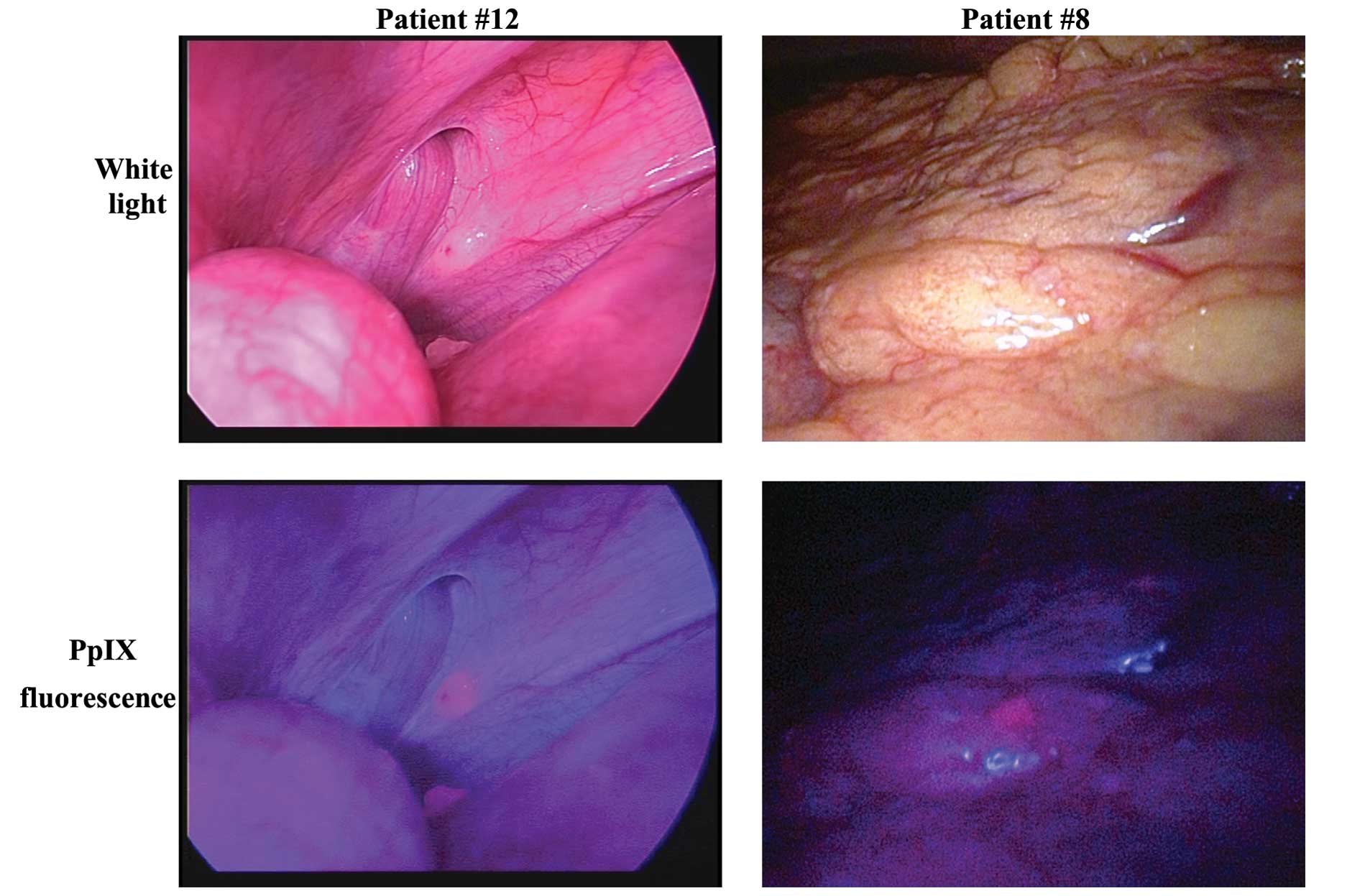Fluorescent detection of peritoneal metastasis in human colorectal cancer using 5-aminolevulinic acid
- Authors:
- Published online on: May 6, 2014 https://doi.org/10.3892/ijo.2014.2417
- Pages: 41-46
-
Copyright: © Kondo et al. This is an open access article distributed under the terms of Creative Commons Attribution License [CC BY_NC 3.0].
Metrics: Total
Views: 0 (Spandidos Publications: | PMC Statistics: )
Total PDF Downloads: 0 (Spandidos Publications: | PMC Statistics: )
Abstract
A precise diagnosis of peritoneal dissemination is necessary to determine the appropriate treatment strategy for colorectal cancer. However, small peritoneal dissemination is difficult to diagnose. 5-aminolevulinic acid (5-ALA) is an intermediate substrate of heme metabolism. The administration of 5-ALA to cancer patients results in tumor-specific accumulation of protoporphyrin IX (PpIX), which emits red fluorescence with blue light irradiation. We evaluated the usefulness of photodynamic diagnosis (PDD) using 5-ALA to detect the peritoneal dissemination of colorectal cancer. EGFP-tagged HT-29 cells were injected into the peritoneal cavity of BALB/c nude mice. After 2 weeks, the mice were given 5-ALA hydrochloride, and metastatic nodules in the omentum were observed with white light and fluorescence images. Twelve colorectal cancer patients suspected to have serosal invasion according to preoperative computed tomography (CT) were enrolled in this study. 5-ALA (15-20 mg per kg body weight) was administered orally to the patients 3 h before surgery. The abdominal cavity was observed under white light and fluorescence. Fluorescence images were analyzed with image analysis software (ImageJ 1.45s, National Institutes of Health, Bethesda, MD, USA). The mice developed peritoneal disseminations. The observed 5-ALA-induced red fluorescence was consistent with the EGFP fluorescent-positive nodules. Peritoneal dissemination was observed with conventional white light imaging in 8 patients. All nodules suspected as being peritoneal dissemination lesions by white light observation were similarly detected by ALA-induced fluorescence. In 1 patient, a small, flat lesion that was missed under white light observation was detected by ALA-induced fluorescence; the lesion was pathologically diagnosed as peritoneal metastasis. In the quantitative fluorescence image analysis, the red/(red + green + blue) ratio was higher in the metastatic nodules compared to the non-metastatic sites of the abdominal wall, fat and liver. We demonstrated better diagnostic accuracy using 5-ALA-PDD compared to conventional laparoscopy in patients with colorectal cancer. 5-ALA-PDD is a promising candidate method for diagnosing peritoneal dissemination of colorectal cancer.












